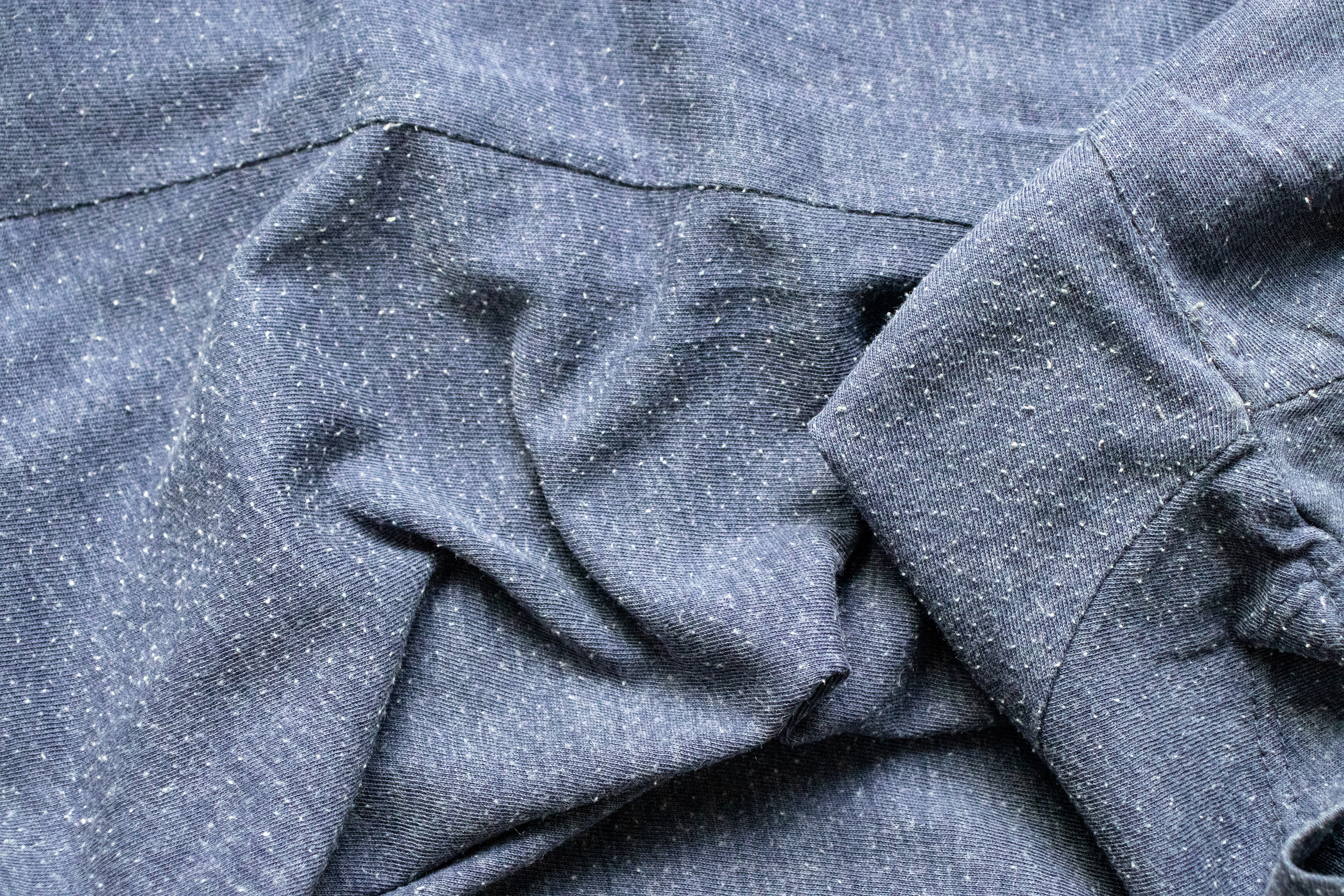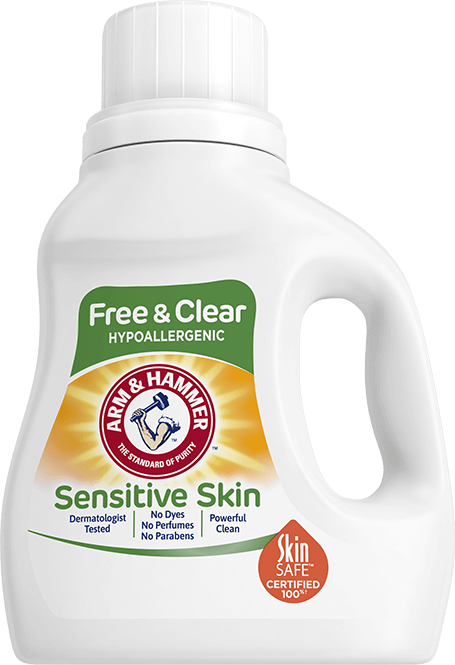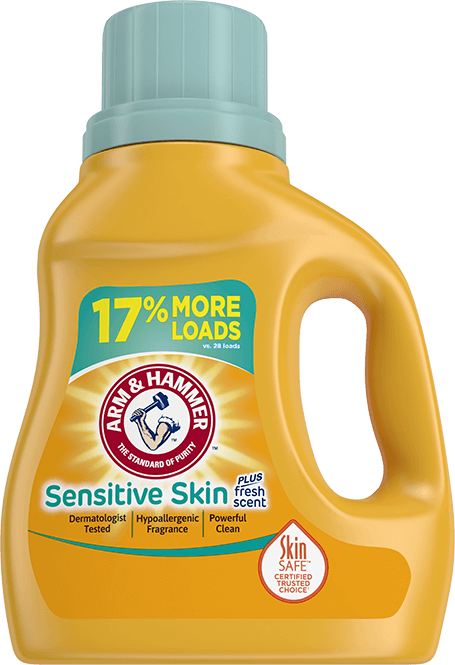Pilling on Clothes: What Causes Those Lint Balls & How to Prevent Them

Have you ever pulled your black shirt out of the dryer expecting it to be fully clean following a night out, only to find little balls of lint all over? Discovering those balls, also known as pilling, on clothes and fabrics can prove quite frustrating. Pilling is a common laundry issue, so you might not be the only person trying to figure out why you have pilling on clothes and how to prevent it from happening again.
So let’s talk more about those pesky fuzz balls, shall we? Wash away your fears of pilling on clothes and read on to find out the cause of pilling, how to prevent it, and what you can do to remove pills when they appear.
What is Pilling on Clothes?
Fabric pilling is the result of fuzz balls, or pills, appearing on clothes and the surface of fabrics. This happens when fabrics rub against one another during the laundry process, which causes fibers to break down and become loose.
Pills can be seen after the first washing or several washes. In addition to looking like lint balls, pilling may also appear as knotted threads on the surface of the fabric because the clothing fibers get tangled together.
What Causes Pilling on Clothes?
Clothing fibers on the surface break down and become tangled when clothes rub together during washing and drying. The threads form firm lint balls on clothes and will attract loose micro-threads over time, which speeds up fabric pilling and can damage the integrity or lifespan of clothing.
Everyday wear causes pilling because the more you wear clothes, the more you wash them. That means the fabric is constantly rubbing against itself and experiencing agitation from washing and drying. Plus, you experience friction when parts of clothing rub together.
Laundry error might also result in pilling if you fail to sort items properly or use the wrong wash cycle for certain fabrics.
Understanding The Difference Between Lint & Pills
The main difference between lint balls on clothes and pills is how they appear on the surface of the fabric(s) in question. Lint will appear looser; it is an actual piece of the fabric or clothing fiber that has come off the clothing. Fabric pilling, meanwhile, is when those fibers tangle together to form tight knots or balls. These fuzz balls may look more closely attached to the surface of the fabric(s).
How to Prevent Pilling on Clothes
Again, since our clothes experience friction whenever we wear them, a certain degree of pilling is inevitable. In that sense, you cannot outright prevent pilling on clothes. But you can take steps to slow down the process and stop pilling from becoming a real threat to the livelihood of your clothes!
Here are some laundry tips for preventing pilling from becoming prevalent.
1. Sort Clothes by Color & Fabric Type
Forgot to separate lights and darks? Your yellow romper may leave pills that stand out on that pair of black pants. Alternatively, your dark holiday sweater may leave fuzz balls on that plain white T-shirt you wear during workouts.
Sorting clothes by color can help you to limit pills that are formed from contrasting color fabrics. You should also consider sorting by fabric type to help keep heavier fabrics from potentially damaging lighter fabrics in the wash over time.

2. Turn Clothes Inside Out
Washing certain garments inside out, like jeans , can help to maintain the outer look of the fabric and prevent fading. It’s a similar approach when you’re hoping to prevent additional pilling on clothes. By turning clothes inside out before washing, you ensure that only the inside of the clothes will rub against each other and the outer fibers can remain healthy and strong.
3. Prepare Your Clothes
It’s a good idea to zip up any zippers and button any buttons on your clothes before putting them into the washer. Constant rubbing against these hard objects can result in further clothing fiber agitation and damage.
4. Choose a Detergent with Enzymes
Once you have sorted and prepped your clothes, you want to add your detergent. Having the right detergent can go a long way in avoiding fabric pilling, particularly if you own a detergent with enzymes.
Enzymatic detergents help to smooth out fabric fibers. This, in turn, lessens the ability of those fibers to knot together. Try choosing from any enzyme-based ARM & HAMMER™ Laundry Detergents, including:
- Arm & Hammer Plus OxiClean™ Odor Blasters, Fresh Burst™ powers out dirt and odors using the power of OxiClean™ Stain Fighters and ARM & HAMMER™ freshness.
- Arm & Hammer Plus OxiClean™ Odor Blasters 5-in-1 Power Paks attack tough odors and can be thrown right in the washer before adding your clothes.
- ARM & HAMMER™ Plus OxiClean™ with Fade Defense, Sparkling Waters beats back tough stains and has Fade Defense technology to help protect vibrant clothes and whites from fading!
Turn to ARM & HAMMER™ enzymatic laundry detergents so you can help your old favorites look fresh!
5. Do Not Overstuff the Washer
It can be tempting to put off laundry until the last possible moment when you find yourself digging into clothing reserves. But you should always opt for doing smaller loads of laundry, when you can.
The fewer clothes you have in the washer, the more freedom of movement they have and the less they will rub against one another and create the friction that leads to pilling. Plus, doing smaller loads is one way to help ensure your detergent thoroughly cleans your clothes for fresh-smelling laundry!
6. Use Cold Water & Gentle Wash Cycle
Gentle or delicate cycles with slower spin speeds can limit agitation between garments in the wash. Cold water is less harsh on delicate fabrics and clothing fibers, so choosing a cold water cycle will also work well in helping to prevent pilling on clothes.
Ultimately, you want to follow the instructions on the garment care label.
7. Consider Air Drying
Heat from the dryer can contribute to pilling on clothes, especially when you have larger loads of laundry. If you do have large laundry loads or fabrics that are prone to pilling, you should consider laying the garments out flat to air dry on a rack or hanging them on a line.
When air drying isn’t an option, choose a dryer cycle with low heat. You might also consider using dryer balls or dryer sheets to lessen static cling.
What Fabrics Do or Do Not Pill?
Fabrics made of longer fibers usually stave off pilling. That includes silk, linen and denim. Conversely, fabrics made of shorter fibers—such as wool, cotton and polyester—are more likely to experience pilling.
So, if you’ve been wondering why your sweater is pilling when you wear it every other crisp fall day or why those workout clothes have pills after you do laundry, you may have a answer. Learn more about how to wash different types of fabrics so you can achieve optimal laundry results!
How to Get Lint Balls Off Clothes
Since you can’t guarantee your clothes will not show signs of pilling, it’s important to know how to remove lint balls, whether they are loose or have begun to firm up. Here are some ways to help remove fuzz balls and pills when needed:
- Use a lint roller: Lint rollers and sticky tape can help remove loose lint and fuzz balls.
- Try a sweater stone: As the name implies, sweater stones can be useful for removing pilling on, well, sweaters! That’s not all, though. Sweater stones help to cut the knot holding lint or pills to the fabric.
- Fabric shavers: Yes, you can use razors to shave away pills and fuzz balls from clothing. Just use these items cautiously, as applying too much pressure might result in you shaving away more of the fabric than intended.
And remember, enzymatic laundry detergents can help smooth fabric fibers and loosen pills and lint so they are easier to remove in the wash.
ARM & HAMMER™ Laundry Products Help Keep Your Clothes Looking Fresh!
Knowing how to limit the impact of pilling on clothes is one way to help ensure your clothes last longer and achieve your sustainable laundry goals. From liquid detergents and powders to scent boosters ARM & HAMMER™ laundry products help to get rid of stains and odors while keeping those looking and smelling clothes fresh!
So don’t let lint and fuzz balls on clothes get you down. Grab an enzymatic ARM & HAMMER™ laundry detergent and follow all of the above steps to help prevent those balls and pesky pills from ruining your favorite clothes.
Laundry Learnings for the Whole Family

